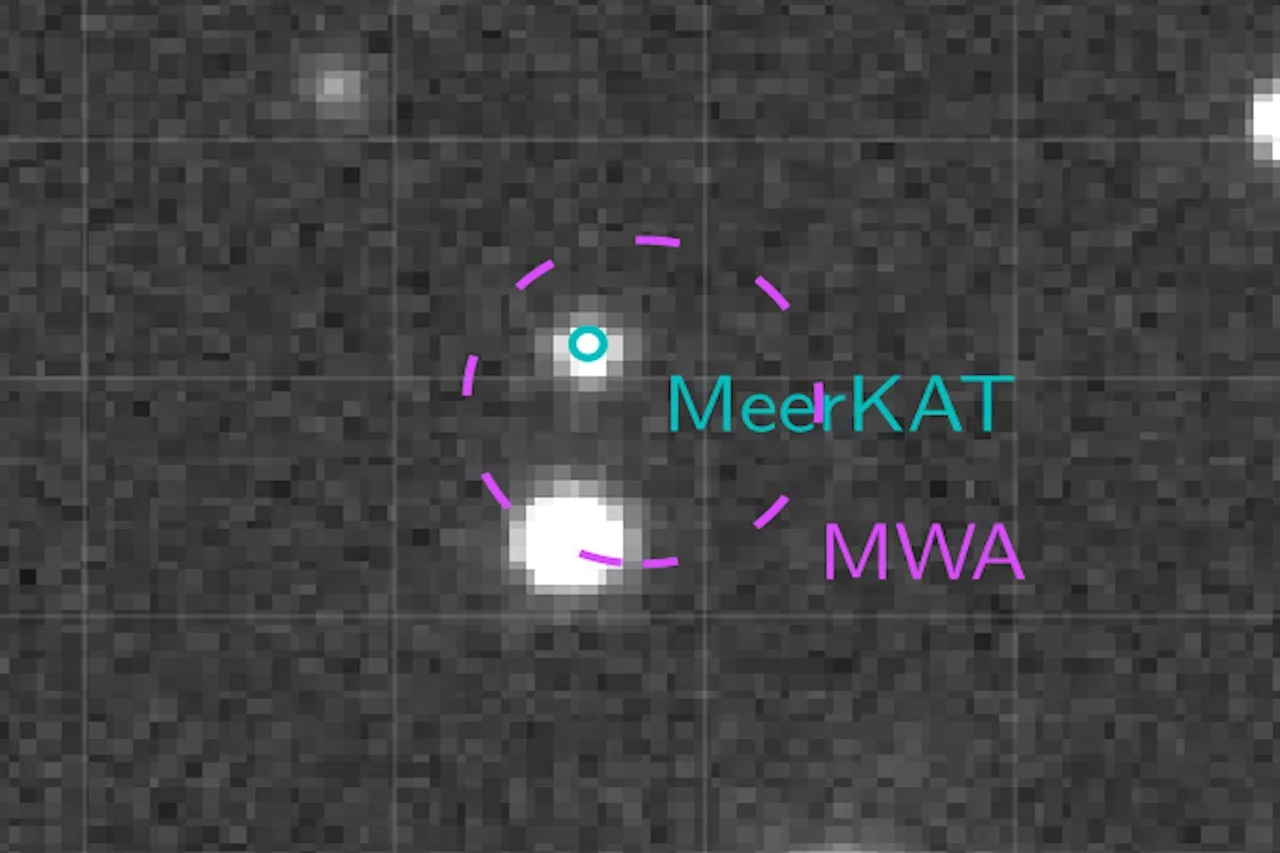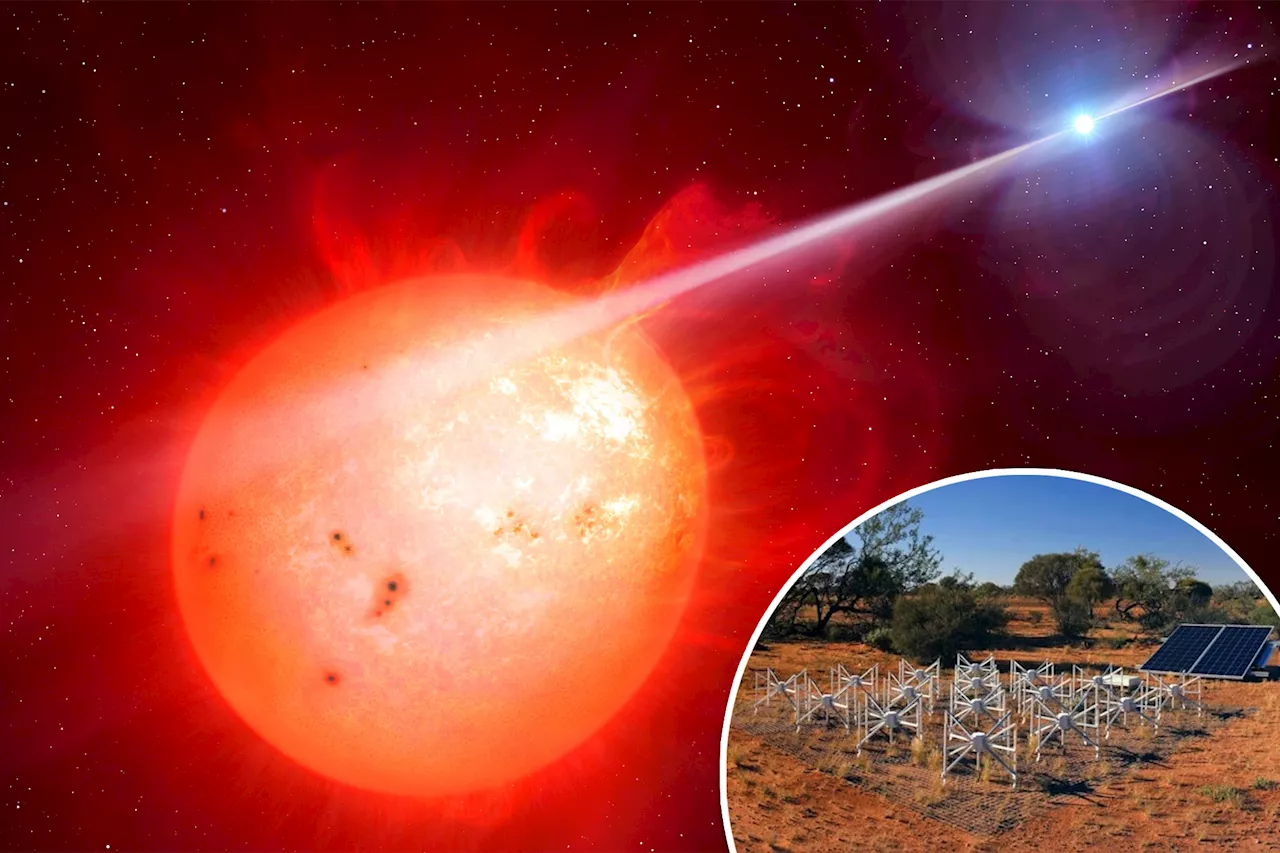Astronomers are dialed in for this discovery.
Researchers for the first time have tracked a pulsing radio signal in space back to its original source — deep in our Milky Way galaxy., explained that the red dwarf was likely in orbit with another star, a white dwarf, which had its core explode a very long time ago.identifies the slowest ever radio burst of its kind, which releases minute-long pulses about once every three hours. It is named GLEAM-X J0704-37.
Michelangelo painted secret figure in Sistine Chapel masterpiece, art expert claims: 'I am firmly convinced'Statue discovered at Cleopatra's alleged tomb reveals her true face, scientist claims As to how a red and white dwarf could create such a signal, it is similar to the nature of our own solar system, according to Walker.
She compared it to how solar winds interact with the Earth’s magnetic fields to create the northern lights and low-frequency radio waves.“On the other hand, there may be many different kinds of systems that can produce long-period radio pulsations,” Walker wrote.
Science Astronomy Milky Way Radio Stars
United States Latest News, United States Headlines
Similar News:You can also read news stories similar to this one that we have collected from other news sources.
 Astronomers close to solving mystery of how universe's giant galaxies formedAstrophysicists find the birth sites of gigantic elliptical galaxies which they say gives new clues about how they were formed. The galaxies look like bulging footballs and how they were created remains a mystery to scientists -- until now.
Astronomers close to solving mystery of how universe's giant galaxies formedAstrophysicists find the birth sites of gigantic elliptical galaxies which they say gives new clues about how they were formed. The galaxies look like bulging footballs and how they were created remains a mystery to scientists -- until now.
Read more »
 Mysterious Radio Signals Lead Astronomers to an Unlikely Cosmic PairAstronomers pinpointed the source of the signal to a low mass star, but it can't generate that much energy on its own.
Mysterious Radio Signals Lead Astronomers to an Unlikely Cosmic PairAstronomers pinpointed the source of the signal to a low mass star, but it can't generate that much energy on its own.
Read more »
 Astronomers' theory of how galaxies formed may be upendedThe standard model for how galaxies formed in the early universe predicted that the James Webb Space Telescope (JWST) would see dim signals from small, primitive galaxies. But data are not confirming the popular hypothesis that invisible dark matter helped the earliest stars and galaxies clump together.
Astronomers' theory of how galaxies formed may be upendedThe standard model for how galaxies formed in the early universe predicted that the James Webb Space Telescope (JWST) would see dim signals from small, primitive galaxies. But data are not confirming the popular hypothesis that invisible dark matter helped the earliest stars and galaxies clump together.
Read more »
 Astronomers witness the in situ spheroid formation in distant submillimetre-bright galaxiesResearchers have used the ALMA telescope and found old elliptical galaxies in the universe can form from intense star formation within early galaxy cores.
Astronomers witness the in situ spheroid formation in distant submillimetre-bright galaxiesResearchers have used the ALMA telescope and found old elliptical galaxies in the universe can form from intense star formation within early galaxy cores.
Read more »
 Astronomers find the smallest asteroids ever detected in the main beltAstronomers have found a way to spot the smallest, 'decameter,' asteroids within the main asteroid belt. They used their approach to detect more than 100 new asteroids, ranging from the size of a bus to several stadiums wide, which are the smallest asteroids within the main belt detected to date.
Astronomers find the smallest asteroids ever detected in the main beltAstronomers have found a way to spot the smallest, 'decameter,' asteroids within the main asteroid belt. They used their approach to detect more than 100 new asteroids, ranging from the size of a bus to several stadiums wide, which are the smallest asteroids within the main belt detected to date.
Read more »
 Astronomers may have discovered the answer to a mysterious stellar eventResearchers have made a record-breaking astrophysical discovery while simultaneously uncovering a possible explanation for the rare and extreme astrophysical event known as long-period radio transients.
Astronomers may have discovered the answer to a mysterious stellar eventResearchers have made a record-breaking astrophysical discovery while simultaneously uncovering a possible explanation for the rare and extreme astrophysical event known as long-period radio transients.
Read more »
